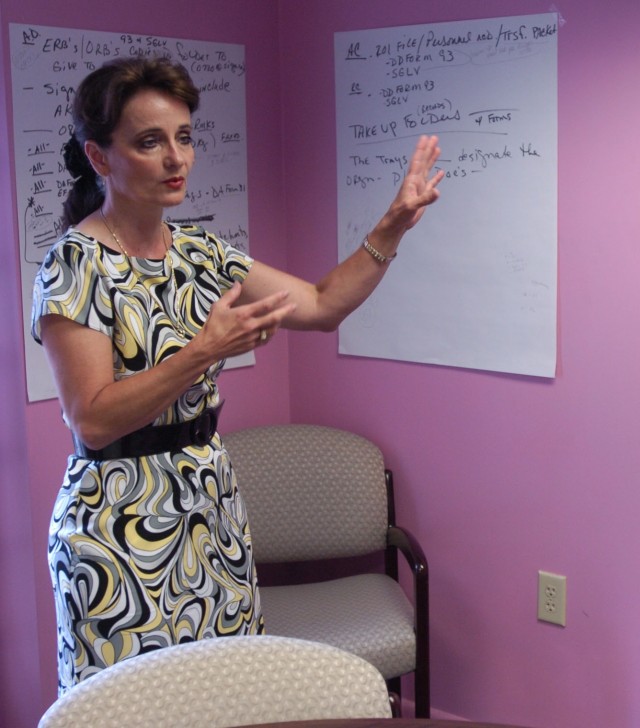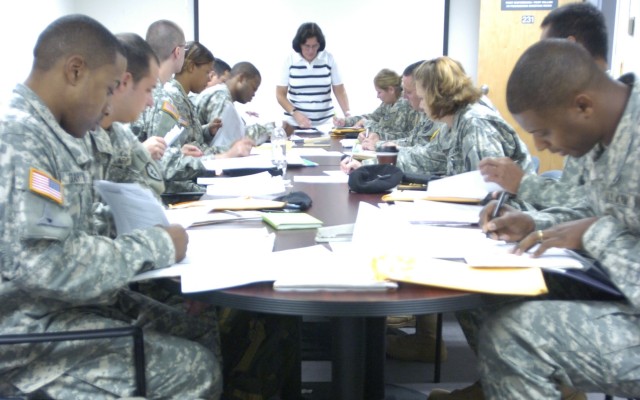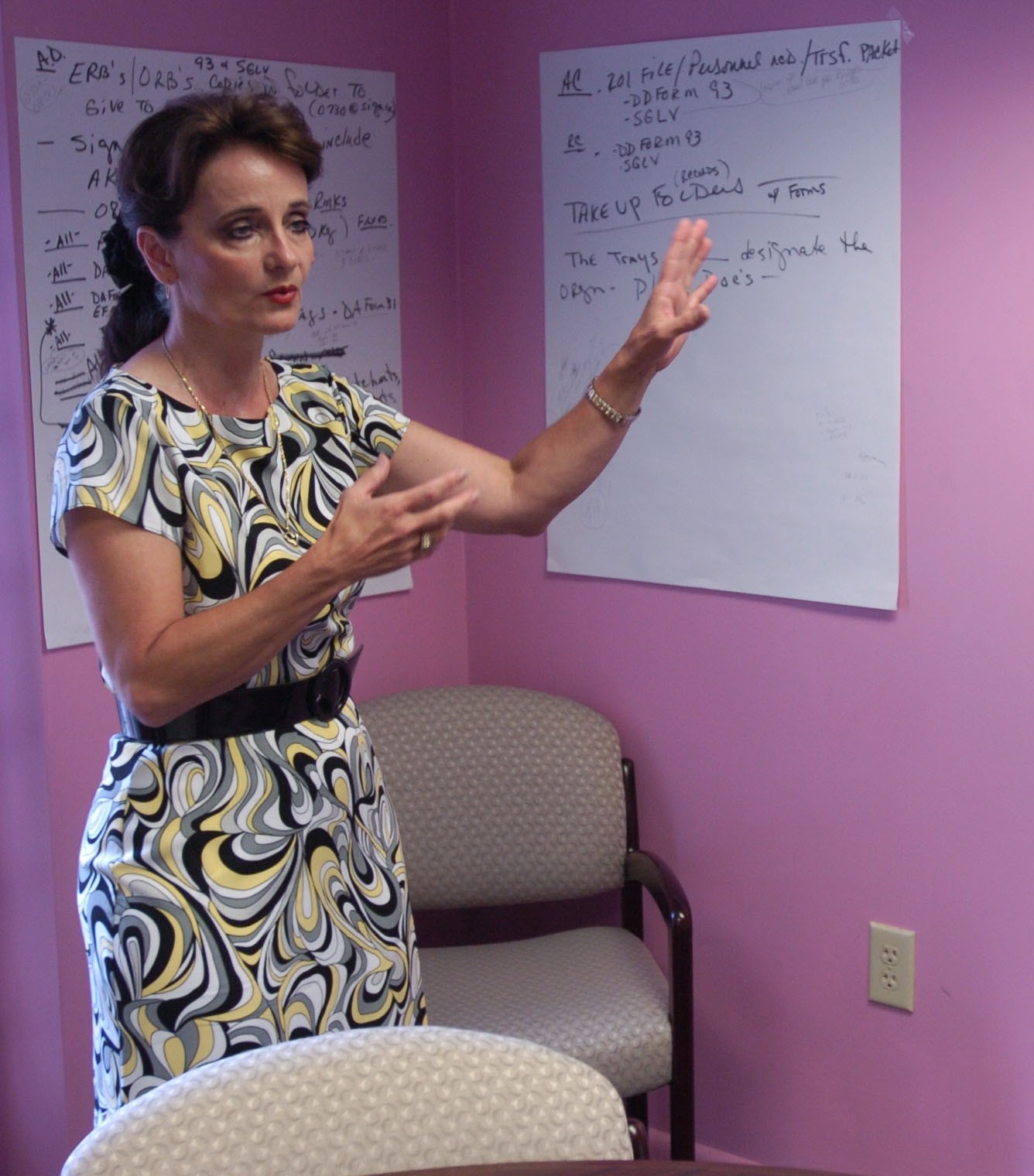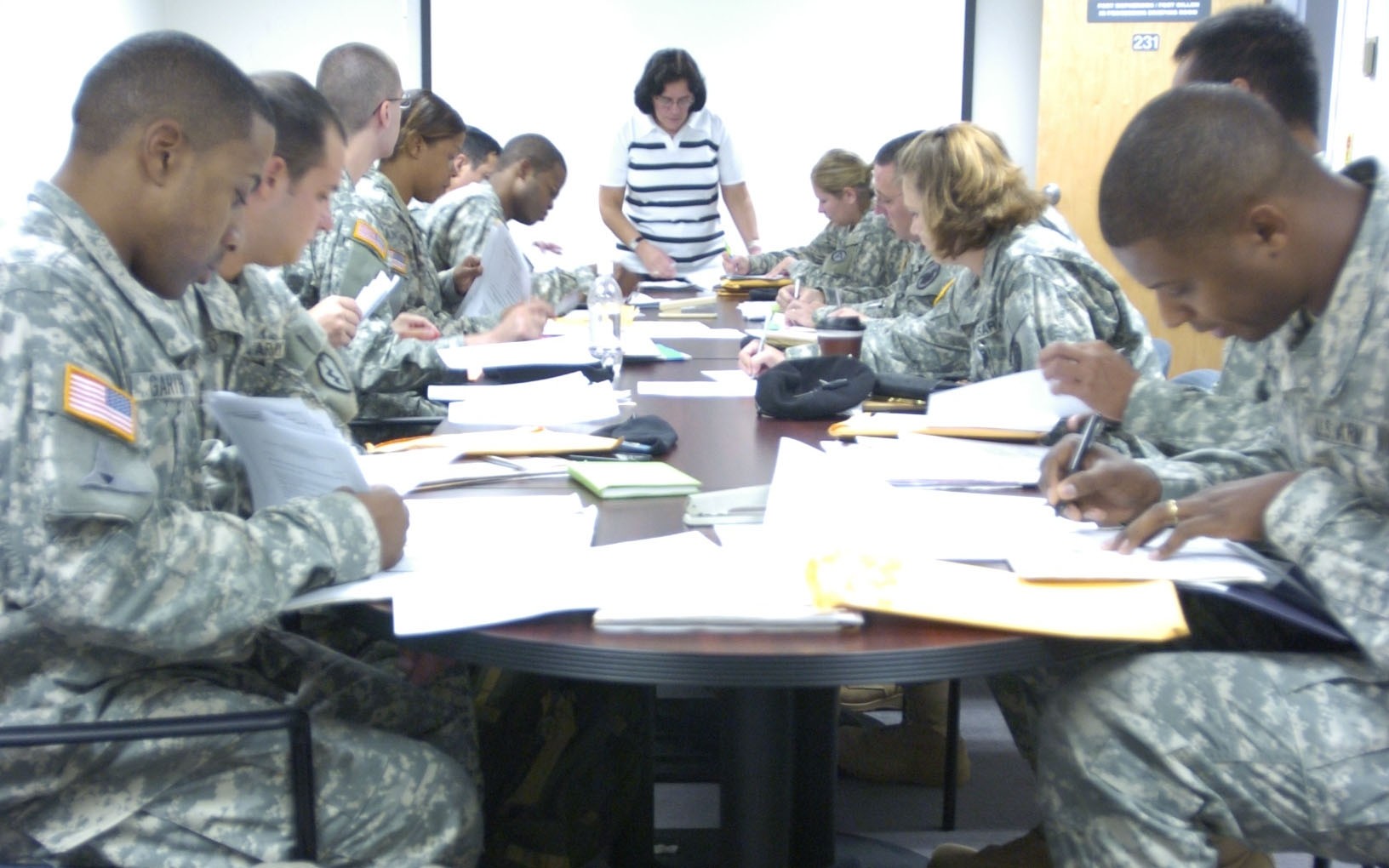FORT MCPHERSON, Ga. -- Her "war room" walls were covered with sheets of butcher block paper and dry erase boards. The slightest glimpse of white space peeked around the key words, phrases and mathematical equations that mapped out the project. Deborah J. Joyce, director, Installation Safety Office, stood at the last board closest to the door and pointed to what she believes to be the most important mark in the room: the number 4.25. Every figure that leads up to that number is part of a management process known as Lean Six Sigma (LSS) and Joyce was the manger for this project. The project\'s end state was to improve Soldiers in-processing through Fort McPherson's One Stop, Bldg. 182, where servicemembers come when they arrive here. Joyce said she received the idea for the project from Barbara Schwartz, director, Directorate of Human Resources, who nominated her for the position. LSS was intriguing to Joyce because of her total quality management (TQM) background. Joyce said one of the main differences between TQM and LSS is the direction from which they're driven. "TQM is driven from down up," said the Cherokee County, native. "But [LSS] is top driven." Also, numbers play a critical role in the LSS process. "You've got to be able to numerically show the value," said Joyce. "As opposed to saying, "well, we believe this would work." Value was crucial to the process from the beginning. Howard C. Butler, deputy garrison commander for U. S. Army Garrison, told Joyce early on not to reduce processing time at the expense of the Soldiers. "Butler's words stayed in my head throughout the process, said Joyce, a former Soldier with the Military Police Corps. Joyce said the Army dictates what information Soldiers must receive when they arrive to a new unit, but they don't say how it must be delivered. Consequently, some pilot programs were started at One Stop during the "implement/ improve" portion of the project. Rosanne Regis, a human resource assistant at One Stop and a member of Joyce's team, tried reducing the Soldiers' processing time by printing out forms ahead time. The Soldiers merely had to check that the information was correct instead of redoing the form. Joyce said it worked so well, she kept doing it after the pilot was complete. LSS calls a trial that works a "quick win." By the project's completion, the victory was total. "The biggest improvement the LSS project has made is that it reduced in-processing from a full day to half a day," said Regis, who has 30 years experience processing Soldiers. "This was the original objective when the project started. "The number of briefers having to take time out of their day to come to the One Stop has been reduced greatly, but the Soldiers are still receiving the information they need," continued the former Army administrative specialist. "The process now allows the Soldiers to return to their jobs in a more timely manner." One senior NCO interviewed by Joyce said he was dreading the process, but was extremely pleased. "He said we were right on target with what we're doing," said Joyce. The efficiency at in-processing had gone from about 38 to 85 percent. But, in the mathematically driven LSS, the key number is that 4.25. Joyce said a near perfect score with the management program is 6. She was concerned that they only had hit 4.25. Her concerns were calmed when she spoke with Keith Miller, one of the leaders in LSS and an LSS master black belt. "[He] said anytime you have increased the [number] by 1, you've done very well," said Joyce. Joyce said her team had improved the rating by 1.8. Joyce has received a "green belt" for her efforts as team leader. But for her, the most important thing is the improved process in servicing Soldiers.
Lean Six Sigma project improves in-processing
By Mr. Peter Chadwick (IMCOM)July 28, 2008




Social Sharing